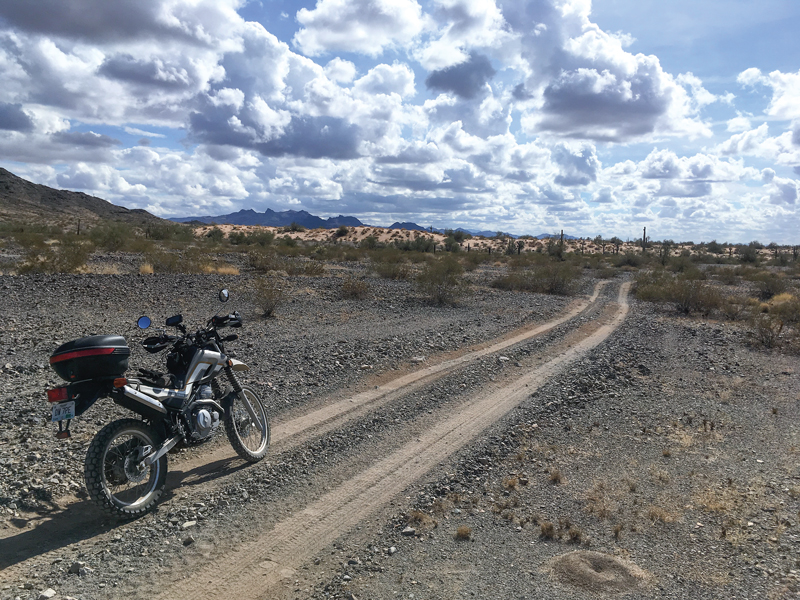
Rolling through Death Valley National Park, I have an eerie feeling that I am being watched. Passing a road sign indicating that I am below sea level, a glance at the GPS confirms it–150 feet below sea level, in fact! But who is spying on me? Pulling over to contemplate the situation and grab a few pictures of the amazing landscape, I have goosebumps, but it isn’t from the brisk February morning air since I’m wearing heated gear.
I am traveling alone and the uneasy feelings will haunt me throughout my three-week journey. As a birthday present to myself, I’ve hauled my 2018 Yamaha XT250 from Missouri to escape the crummy winter weather and research three desert parks–Death Valley National Park, Joshua Tree National Park and Mojave National Preserve.
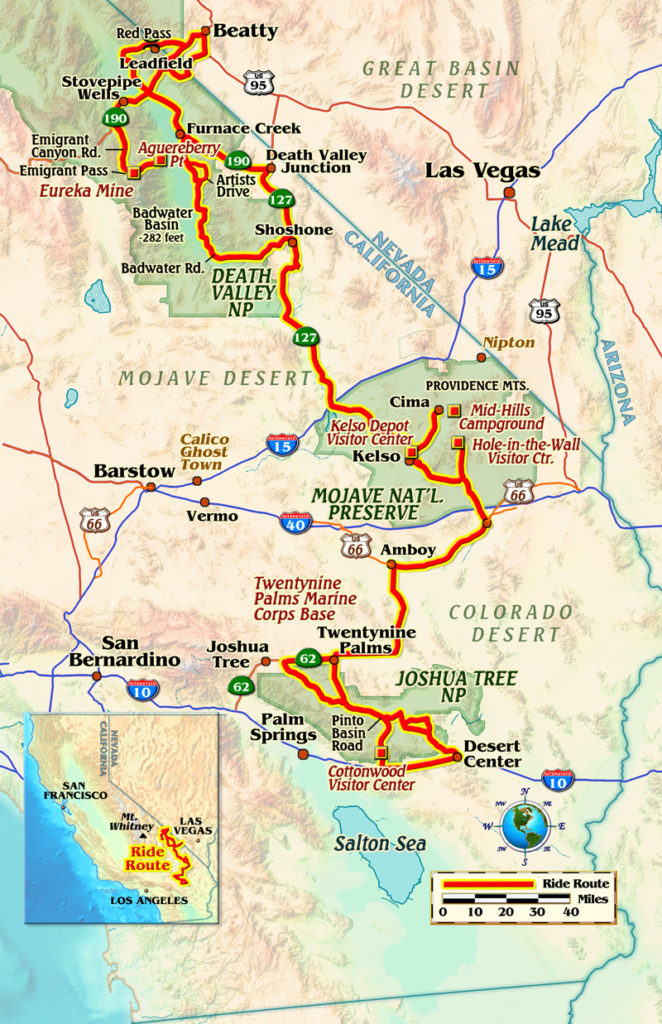
It’s not my first time here. In the 1960s, my father was stationed at Travis AFB here in California. He always had a scooter or a motorcycle and I was the kid who always darted outside at the sound of the engine. Dad and I loved exploring on two wheels, and now a mental image of him riding a Cushman and wearing an Air Force flight suit is coming into focus.
In his senior years he enjoyed sitting on the pillion of my Honda Gold Wings, reminiscing about our adventures. Now it’s me in my senior years, the Gold Wings are gone, and I’m finding that motorcycle adventures can be just as much fun on a 250 as they are on an 1800!

Downshifting now for the upcoming turn onto Emigrant Canyon Road, I negotiate potholes, rocks, sand and dirt as the road ascends past Eureka Mine toward my destination today: the 6,433-foot overlook at Aguereberry Point. Below is Badwater Basin, the lowest point in North America at 282 feet below sea level. Mount Whitney, the highest point in the contiguous 48 United States, resides 85 miles to the northwest.
To get here I’ve skirted decrepit mines and settlements scattered throughout the park. Encompassing 3.4 million acres, Death Valley is the largest U.S. national park outside Alaska, with nearly 1,000 miles of roads providing access to spectacular remote locations–provided you are on a street-licensed machine. A dual-sport is perfect, and an adventure bike can handle most of the unpaved byways.
This park features rugged mountains rising as much as 11,000 feet, deep and winding canyons, rolling sand dunes and spring-fed oases, some of which are accessible on street bikes. But to see today’s sights you’ll need long-travel suspension, good ground clearance, prior off-road experience and the ability to pick up your bike by yourself if you choose to travel alone. There were days exploring these parks that I didn’t see another human being until I returned to pavement.

I chose February for this trip because summer daytime temperatures often exceed 120 degrees and nights remain hot, with lows in the 90s. This winter morning is typical–bright sun, a light breeze and afternoon highs in the 70s in the basin and in the 40s and 50s in the mountains.
One morning I take the fun-to-ride paved and winding Badwater Road south from my campground at Furnace Creek to Shoshone, where I plan to refuel and have lunch. I’ve clocked my fuel-injected XT250 at 70 mph on a GPS, but today I’m limited by the hills and blind curves. It’s 150 miles round trip to Shoshone–doable with the XT’s 2.6-gallon fuel tank and estimated 76 mpg fuel economy, but fuel outside the park is nearly $2 a gallon cheaper! I fill up in Shoshone, which allows exploring several of the attractions along the way, such as the newly paved and unforgettable Artists Drive. The curvy, one-way drive through mountains and canyons displays a colorful palate of ancient claystone. There are several parking areas for water breaks and photography.
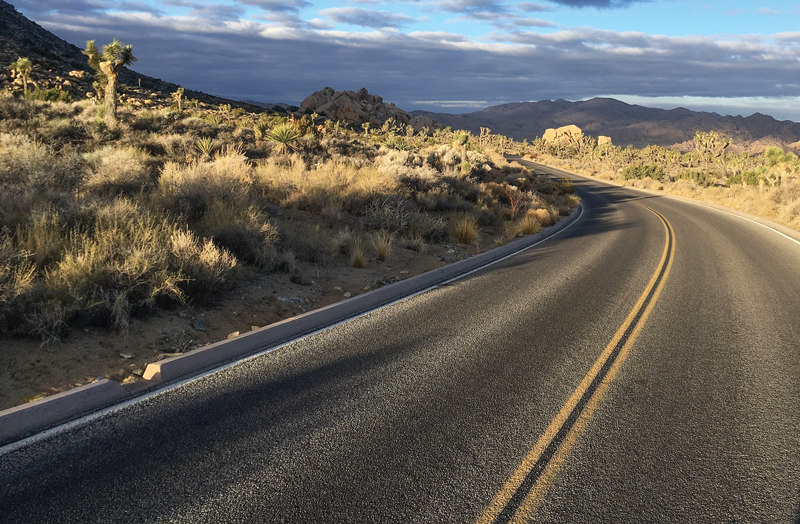
My day on Badwater Road and Artists Drive was a highlight of my Death Valley adventure, but the best was yet to come! Having an off-road vehicle allows access to Titus Canyon, a rough, rocky road that is steep and narrow and often closed due to snow, mud or washouts. The one-way entrance is in Nevada and the exit is in California. Twenty-seven miles long, the canyon is infrequently patrolled and summer travel is not advised. Fuel, food and water are available in Beatty, Nevada, six miles from the canyon entrance. The trip to Beatty from my campsite at Furnace Creek was 40 miles. Careful fuel planning is essential, but you’ll be treated to an adventure of steep climbs and descents, colorful rock deposits and fossil beds 30 to 35 million years old. The fossilized skull of a huge, rhino-like Titanothere was found here in 1933.
The highest point on the road, Red Pass (5,250 feet), affords a grand view and a great place for a break. Next up is the ghost town of Leadfield, which “boomed” for less than a year in 1926-27 because the lead deposits bottomed out quickly. All that is left today are a few shacks and a number of mines.

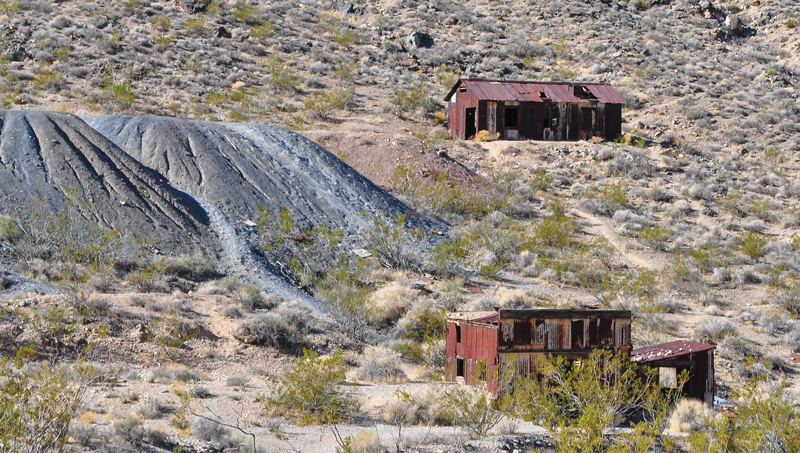 The final 1.5 miles of the canyon are narrow; the walls squeeze down to less than 20 feet apart in some places. As the road enters the narrows it descends into the roughest part of the ride, but it’s no big deal for the XT with its remarkable 11 inches of ground clearance and 9/7 inches of front/rear suspension travel. With a 21-inch spoked front wheel, 51 degrees of maximum turning angle and a seat roughly 31 inches above the ground, the canyon is a walk in the park. From there I enter an area of shadow and echoes that make my 250 sound like a 650! Moments later I emerge from the canyon into dazzling sunlight and the conclusion of part one of my adventure.
The final 1.5 miles of the canyon are narrow; the walls squeeze down to less than 20 feet apart in some places. As the road enters the narrows it descends into the roughest part of the ride, but it’s no big deal for the XT with its remarkable 11 inches of ground clearance and 9/7 inches of front/rear suspension travel. With a 21-inch spoked front wheel, 51 degrees of maximum turning angle and a seat roughly 31 inches above the ground, the canyon is a walk in the park. From there I enter an area of shadow and echoes that make my 250 sound like a 650! Moments later I emerge from the canyon into dazzling sunlight and the conclusion of part one of my adventure.

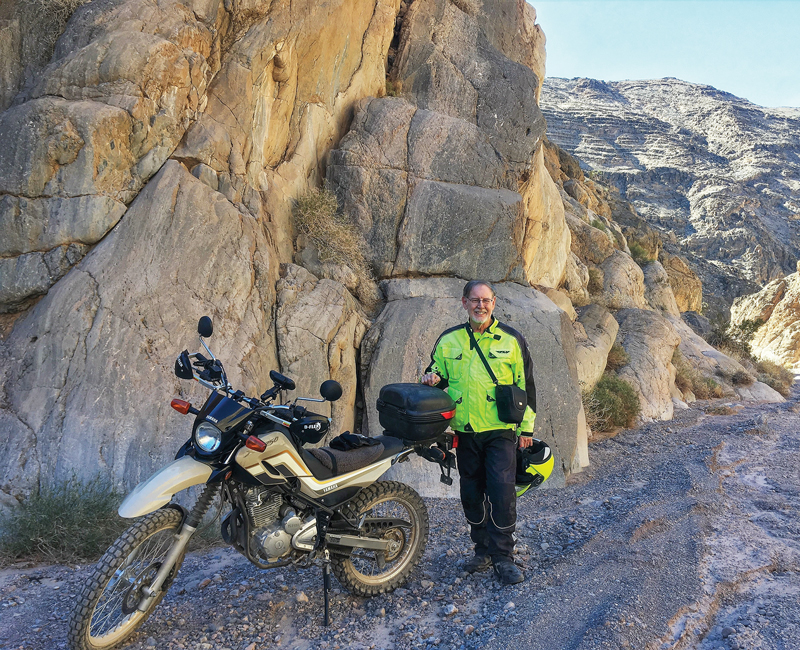
The historic town of Kelso, plopped down in the center of Mojave National Preserve, is some 100 miles south of Death Valley, and connected to the larger park not just by geography, but also captivating railroad history. The fabled Harmony Borax Works in Death Valley desperately needed a rail line to replace the slow and treacherous twenty-mule team route. But one steam locomotive was not capable of hauling heavy loads over the steep two-percent grade at Cima Summit, which meant “helper engines” would need to be stationed nearby to assist locomotives up the 2,078-foot ascent. And, steam locomotives needed water.
There was a reliable water source from a spring in the Providence Mountains, so Siding #16, later renamed Kelso, became the site of the helper engine station that made the route to Los Angeles a reality. In 1924 Siding #16 was refurbished into the handsome Spanish Mission Revival-style depot that stands today as the preserve’s visitor center. If you are a train history buff, plan on spending a couple of hours absorbing the enchanting museum/historic monument.

There’s other history as well, including Route 66, which was officially established in 1926 and ran parallel to what is now Interstate 40, which forms the southern boundary of the Mojave Preserve. The Mojave Desert spreads through portions of California and Nevada and very small areas in Arizona and Utah. It encompasses nearly 50,000 square miles and contains most of Joshua Tree and Death Valley national parks.
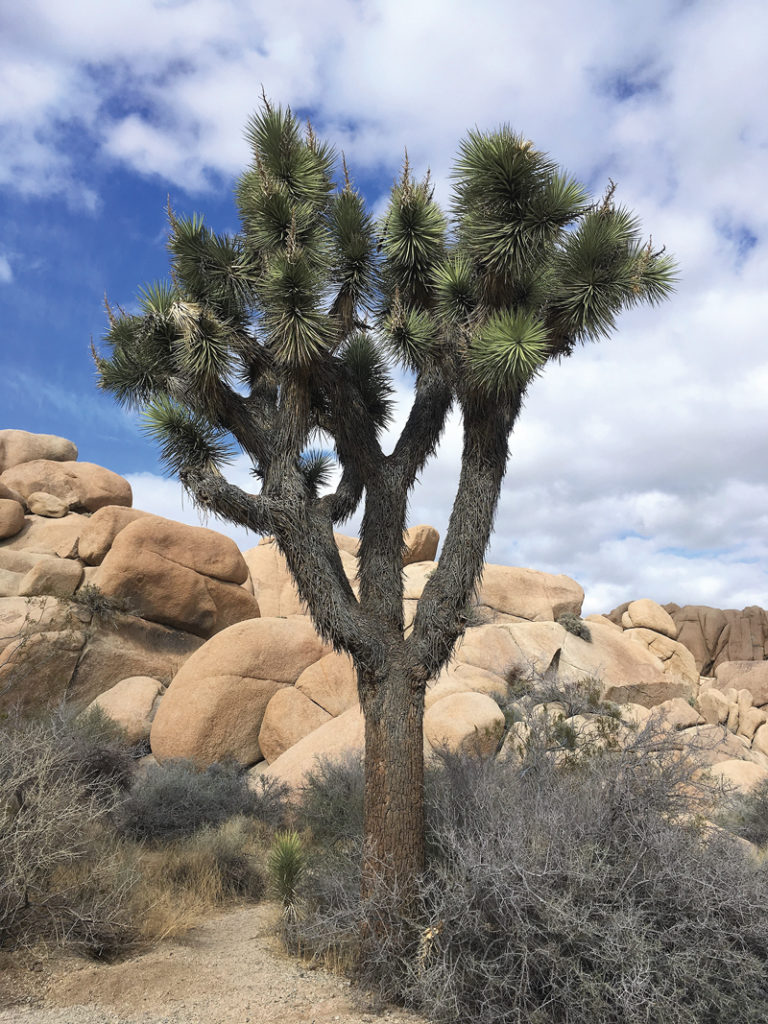
There are also two famous ghost towns: Calico, with several shops and attractions, and Nipton, on the northern entrance to the Preserve, a restored ghost town founded in 1885. Both are reachable on street bikes. Other ghost towns, mining camps, petroglyphs and similar attractions require gravel road travel, including the lovely and quiet Mid Hills Campground. The main campground, Hole-in-the-Wall, is on a paved road. Neither campground has water when I arrive, but I have plenty to last four nights while enjoying the stunning sunsets, sunrises and astonishing starry nights.

Eighty miles to the south brings me to Joshua Tree, which is decidedly more developed and touristy than Mojave and more crowded than Death Valley. But then it’s closer to Los Angeles and has fewer roads for visitors to spread out on. It also has magnificent scenery, interesting geology and the famous Joshua trees, which aren’t trees at all but rather yucca plants. On my first day in the park the XT and I tour from the north entrance at Twentynine Palms around to the west entrance at the busy town of Joshua Tree, then follow State Route 62 back to our starting point, a trip of 50 miles, more if you explore the many gravel side roads.
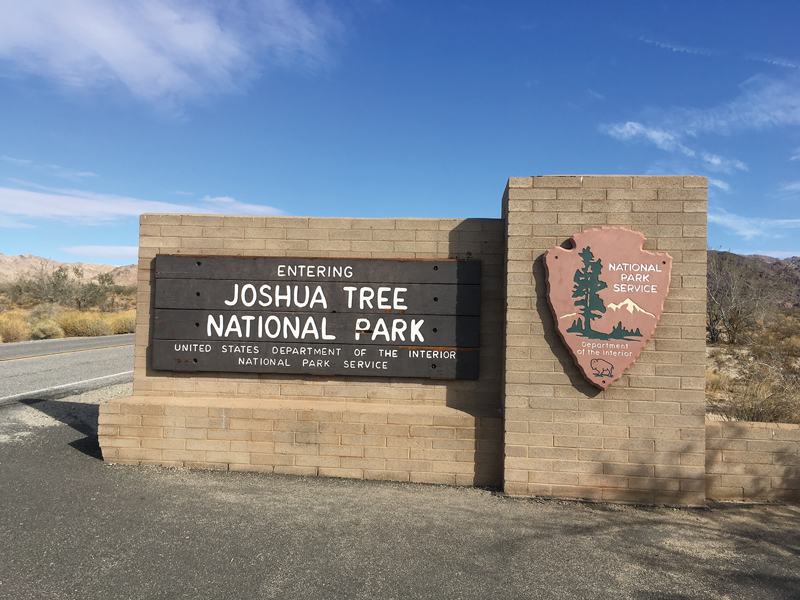
The next day we explore lovely, curvy, paved Pinto Basin Road down to Cottonwood Visitor Center, near Interstate 10. The dramatic, ever-changing geology is not to be missed. On the way back to my campsite I muse how far XTs have come since I bought my first one in the 1980s–a kickstart, carbureted 350. In that same decade I also discovered Edward Abbey, lover of wilderness, park ranger and author of “Desert Solitaire,” who once sarcastically called his beloved desert a “red wasteland.” Could it be his watchful eyes that I’ve been sensing these past few weeks?








I’m an older long time rider, having had too many bikes, but with age I have come to believe smaller bikes are more fun to ride and mor economical. The EX250 is an affordable and capable bike that allows older experienced riders to enjoy. With a few accessories it can become a very formidable machine. I want one!!
Loved the adventure story. How did the 250 handle? Mpgs, comfort, reliability? Everything stock on it? What kind of setup and equipment you used? Thanks!
I bought my Yamaha 250XT this year, first bike in 50 years. Great entry bike, can handle most off road terrain, it’s not a dirt bike but allows you to go anywhere on or off. So far I have done trips in Santa Barbara county, Mono and Inyo, going to Mojave this month. Get out there and explore the roads, this bike can do almost all of it.
I loved the story, thank you
Nice looking XT250 you got there. May I know what’s your setup for it? I’m thinking of buying a new motorcycle exhaust for my bike. Would like to ride to Mojave one of these days and see the places you’ve been to.